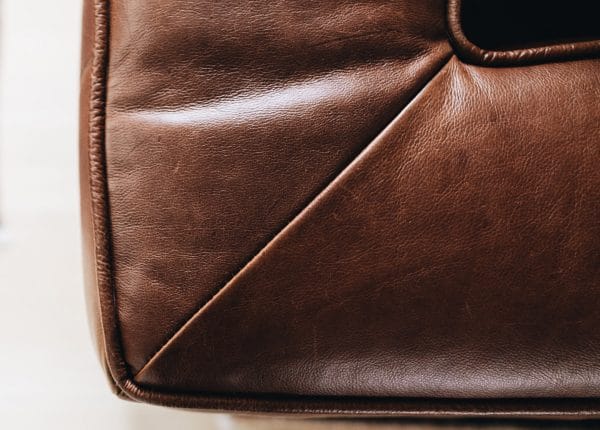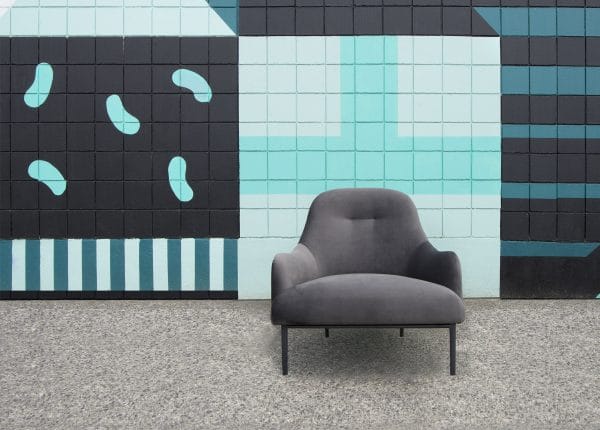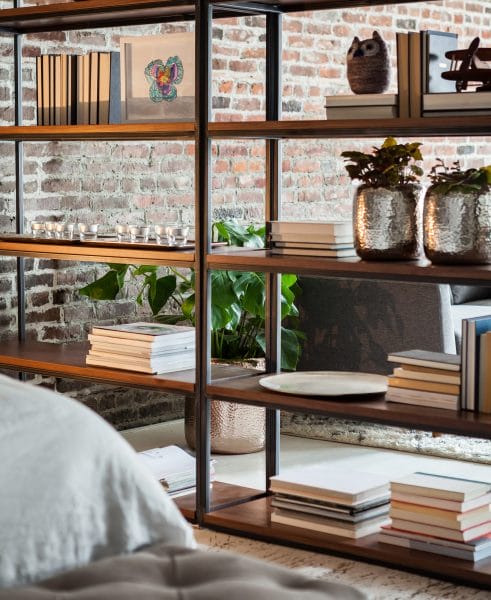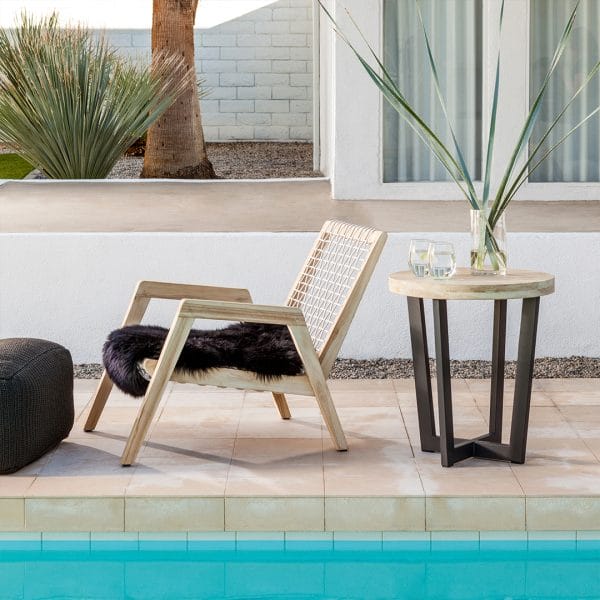Ultimate Furniture Cleaning Guide
It’s January! Otherwise known as the time of year where we refresh everything we can get our hands and mental energy on. We at Article HQ have lots of resolutions, but chief amongst them is to become masterful cleaners. Not pedestrian, clean-the-bathroom, scrub-the-sink cleaners, but the kind of diagnostic expert that understands how to clean a range of fibres, materials, and fabrics. To that end, we’ve built this handy ultimate furniture cleaning guide to help you come along on our journey toward expertise. Roll up your sleeves and put on an apron: we’re going deep.
The Ultimate Guide to Cleaning Your Modern Furniture

You clean your sheets, but do you clean your bed? A hardwood bed such as the Culla bed just needs a wipe down with a little soap and water.
General Furniture Care Tips
The sunny spot — best left to your animals. Shafts of sunlight are great mood lifters, but if you can, try to position your modern office furniture so it’s not sitting in direct light. UV rays will fade and damage leather, wood, and fabric items.
Be careful with chemicals. Household chemical cleaners and detergents work great in your bathroom and on some kitchen appliances. Nothing is more satisfying than dissolving shower mold. However, when it comes to furniture, we generally recommend against them. Chemical cleaners can have strange reactions with natural fibers and materials. To avoid weird spots, we go without, or leave it to the pros.
Flip it and reverse it. If you have furniture with removable cushions, get into the habit of turning them frequently. Flipping a cushion doesn’t make a stain go away (we’ve tested this extensively), but it does help to evenly distribute wear. Everyone has their favorite seat. It just doesn’t need to look that way.
How to Clean Leather Furniture
There is nothing quite like the creamy, soft texture of leather. Leather furniture is a carefully considered investment purchase. At Article, we use full and semi aniline leather across all of our products. Quick refresher: “aniline” refers to the dying process a hide goes through once it’s been tanned. Full aniline retains its natural markings (think bug bites, scratches, etc); semi-aniline has a thin layer of wax applied before dying to help color be absorbed more evenly. Semi-aniline leather has a more uniform appearance. Ultimate furniture cleaning guide tip number one: know thy fabric.

Is this a hospital corner? The Cigar sofa looks even more rugged and charming up close. Read on to learn more about how to care for your leather furniture.
Aniline refers to the dying process a hide goes through once it has been tanned. We feature two different types of aniline in our collection: full-aniline and semi-aniline. If you want to read more about leather and leather care, check out our dedicated blog post.
We love full aniline leather because it’s especially forgiving. General wear shows up on the couch, but quickly gets in step with the overall look and blends right in. Cleaning both full aniline and semi aniline leather furniture is the same, and it’s simple. Once a week grab a clean, damp cloth and use it to wipe or buff away noticeable stains. Use a brush vacuum-attachment to clear up debris and crumbs from tufts, seams, and corners. Doing this regularly keeps debris from caking into hard-to-reach areas.

Take me to Nirvana… the sofa, of course. We love the distressed look of the Nirvana’s semi-aniline leather.
To keep your leather looking its best, commit to giving it a regular wipe-down with a leather conditioner for hydration and shine. We recommend the leather salve and leather oil from Otterwax. Apply once you’ve received and set up your mid century modern sofa, and then again every six months to keep it in tip-top shape.
If you spill something on your leather couch, cover the offending spill with a soft, dry cloth to soak up excess moisture. Take special care not to rub the stain! We get it: you’re nervous about your couch, and scrubbing seems like a good way to get your stain out. In fact, it simply encourages the stain to sink in further and set. Walk away. Once the initial spill is soaked up, gently clean the area by wiping with a damp cloth. From there, you can assess what further action is necessary. You may be pleased to see that the stain is gone. If it’s left a noticeable mark, consult a leather specialist or your local dry cleaner.
How to Clean Fabric Furniture
This is a two-pronged effort. Since all of your fabric pieces will benefit from regular vacuuming, you’re going to want to take a hard look at how clean that vacuum is. Make sure your vacuum head is wiped clean, that the bristles are free of grit and dust, and that your canister is empty, wiped, and ready to receive a bunch of new dirt. We’ll let you determine how hard you need to scrub your sucker, but keep in mind that the cleaner your cleaning tools, the cleaner your home. Consider that ultimate furniture cleaning guide tip number two. Bam.

The Divan sofa: so creamy, so serene, so easy to spill on.
Fabric upholstered furniture is what vacuum attachments are made for. Literally. The fabric attachment specifically is the small rectangular piece with soft bristles around the suction area. Give your fabric furniture a once-over, paying special attention to seams, crevices, and any tufts. A lint roller is handy for prying especially stubborn debris (couch, pet hair, cough) loose.
Regarding spills. Look. We’re not trying to stress you out, but time of of the essence here. The faster you attend to the spill, the less chance it has of setting into the fabric. The moment you see that dollop of dip or splash of red wine hit, grab a clean absorbent cloth or paper towel. Contain your impulse to scrub. Remember — that will only push the spill deeper into the fibres. Instead, simply place the cloth over the spill. Leave the cloth in place until all the liquid has been absorbed. After, air dry or use a blow dryer on low setting to dry out. You’ll be surprised at how effective this simple measure can be.

Keep your Happy chair happy by sopping up spills instead of scrubbing them in.
Once the spill is dry, assess whether or not it needs further attention. If there is a stain, add a small squeeze of dishwashing detergent to a half cup of water and shake well. Use the resulting suds to clean the stain — but again, do not rub too vigorously. Instead, blot and dry. If you’ve got a major stain going on, or are experiencing some heavy soiling (yikes), consult a furniture cleaning specialist.
Weaves or upholstery that fall under this category include:
- New Zealand wool
- Wool
- Viscose
- Cotton
- Merino felt
- Blends of the above
How to Clean Velvet Furniture
Like its cousin fabric, velvet furniture loves a good, regular vacuuming. Vacuuming keeps velvet looking tidy and helps the fibers stand up, which maintains the shimmery depth of its pile. As with fabric, use the fabric attachment of your vacuum, With short, brisk strokes, vacuum your velvet, paying close attention to the divots and seams. Getting grit out early and often will preserve your velvet pieces for years to come.

The Embrace chair needs TLC too. Regular vacuuming and attention to spills will keep it huggable for years and years.
One issue that is unique to velvet pieces are “crush marks” from packaging, heavy stacked items, or very long movie marathons (we see you). You may notice them as silvery lines running through your sofa pile. Thankfully, they are simply to remove.
Knock knock. Who’s there? BAM it’s ultimate furniture cleaning guide tip number THREE: the crush marks is actually just velvet pile that’s been crushed. You can remove them by using a steamer to gently undo the smushing, lifting the pile and eliminating the creases. Between steams, gently brush in the opposite direction of the velvet pile to release the wrinkles.
For spills — again with the “time is of the essence” thing. As with fabric, the minute you see a spill, get thee to a clean damp cloth and mop up the spill. Avoid scrubbing, instead waiting for the spill to absorb and dry fully before assessing step two in your clean-up query. The same dish soap/water method is recommended for small, manageable stains, but for major accidents, go to your local professional.
Weaves or upholstery that fall under this category include:
- Cotton velvet
- Tufted velvet
How to Clean Wood Furniture
A natural material, wood furniture brings warmth and interest to a space. Treat your wooden furniture right and you’ll have it for years — maybe even generations — to come.

Our Amoeba coffee table is a great example of how veneered wood shines (literally).
Thankfully, caring for wood is simple. Both solid and veneered wood can be wiped down with a damp cloth to get rid of any dust, crumbs, or smudges. Wood is hardy, but can be discolored by chemical cleaners. It’s best to stick to mild soap and water. Whereas solid wood can eventually be sanded and re-stained for a that brand-new appearance, wood veneer must be cared for consistently if you want to to last forever. For all wood: soak up stains immediately, use a coaster for both sweaty glasses and warm dishes, and wipe often. If you’re giving your wooden furniture a clean, be sure to dry after the wipe. Dampness can leave rings and marks on natural materials. Not the end of the world, but pretty preventable.

We love how Emily Henderson punctuates this feature wall with her Seno cabinet in walnut.
Cleaning Solid Woods
Beautiful, and hardy, solid woods are natural material and will respond to extreme changes in temperature, humidity, and exposure to sun. For general cleaning, use a soft, non-abrasive cloth that’s slightly damp to wipe away any dust or dirt. If you need to address a sticky spot, get two cloths. Dip one in a bubbly bath of dish soap and warm water and wring excess water out, then wipe the spot. Then wipe the entire area again with the other dry cloth.
Cleaning Teak
Teak is a tropical hardwood with a tight grain and beautiful glossy patina. As it is a natural material, it is affected by changes in temperature and humidity. Exposure can lead to small fissures known as “checking.” To avoid this, keep your teak furniture away from windows and heaters, and treat with teak oil to restore moisture. To clean your teak furniture, simply wipe it down with a damp cloth, and a soap and water mixture. This likely goes without saying (we’d like to count this as an ultimate furniture cleaning guide tip, but… we won’t), but please — never use a power washer.
Over time, all wooden furniture will start to show signs of wear and tear. This is a natural part of the aging process and adds to a pieces’ unique charm. If you have marks that need attending to, consider a touch up or a wax filler pen. We stock both in a range of hues.

The Archive Shelf featured on Wit & Delight demands regular dusting. Thankfully, all it needs is soap and water.
Veneered Wood
Veneered wood is a great alternative if you’re looking for a lighter, more adaptable piece. Because veneer is simply thin strips of wood glued together, it is less susceptible to environmental strains like humidity and changing temperatures. As veneered pieces can’t be sanded, minding your coasters will be important to ensuring a pieces’ longevity. As with solid wood, avoid wetness and hot dishes, and attend to stains and marks quickly with warm soapy water.
How to Clean Marble
Marble is cool, visually pleasing and really, really porous. Not only does it make a regal statement in your living space, your marble table loves to suck up spills. Which sounds better than it actually is. When it comes to your marble tables, spills need to be avoided more than treated. Of course, if disaster does strike, grab yourself a non-abrasive, soft cloth and avoid any household chemical cleaners or products. Marble is particularly sensitive to acid (lemon, vinegar, etc), and this applies to cleaners as well.

The Mara table is a beautiful spot for a coffee — but please please please, use a coaster!
How to Clean Metal
Most of our metal products are made from steel, and are simple to clean with warm soapy water. For pedestrian, everyday cleaning, all you need is a rag and a bucket. To treat spills, soak up the offender with a clean absorbent cloth, and proceed to wipe with a soapy cloth. Make sure to dry the area once the spill has been cleaned to prevent discoloration.
How to Clean Wicker/Rattan
Rattan is a natural material typically made from dried palm, a great material for resilient mid-century modern outdoor furniture. Flexible and sturdy, wicker is usually used for outdoor furniture. While it is a hardy material, too much water can lead to swelling. Store your rattan out of the rain and indoors during the winter months to guarantee a long life.

Lean back, relax, and take in the view from your Teaka lounge chair. Just never ever power wash it, okay?
To clean your wicker or rattan furniture, use a soft cloth and plain old water. Remove stubborn dust with a dry bristle-brush, or using the upholstery attachment of your vacuum cleaner. For stubborn dirt or stains wipe with a damp cloth while avoiding saturation. Rinse and blot any excess moisture with a soft cloth and allow it to air dry. No need to scrub your rattan — doing so could actually strip it and make it susceptible to water damage.
How to Clean Glass
Chemical cleaners allowed! Grab that Windex. Use a soft cloth or a paper towel. Spray, wipe, repeat until clean.
How to Clean Sheepskin
These popular cozies are busy keeping the hygge vibe going all winter long. Sheepskins are also great at regulating temperature, meaning they make for a good summertime cozy too. Give them some cleaning TLC to keep them looking their best. Regular brushing will help to restore the soft fluffy appearance. You can sop up minor stains with a damp cloth. When it’s time for a deep clean though, nothing but the dry cleaner will do.

Our Lanna sheepskins are the perfect place to take a long winter’s nap. Dry clean only, please!
Go Pro… fessional Cleaners
DIY is cool and all, but some materials demand extra love and attention that only a certified dry cleaner can offer. Ultimate furniture cleaning tip number four: professionals are good and worth the money.
- Alpaca
- Goatskin
- Cowhide
No Cleaning Degree Required
Sometimes the simplest things are the most effective. Most cleaning aficionados will agree that for a lot of items, a gentle cleaning solution, a washcloth, and strong arm are all you need.
Here’s our list of materials that fit the ‘nothing special needed’ category:
- Fiber-cement
- Aluminum
- Resin Wicker
- Concrete
- Recycled PET
- Polypropylene
- Plastic
- MDF
- Galvanized Steel


